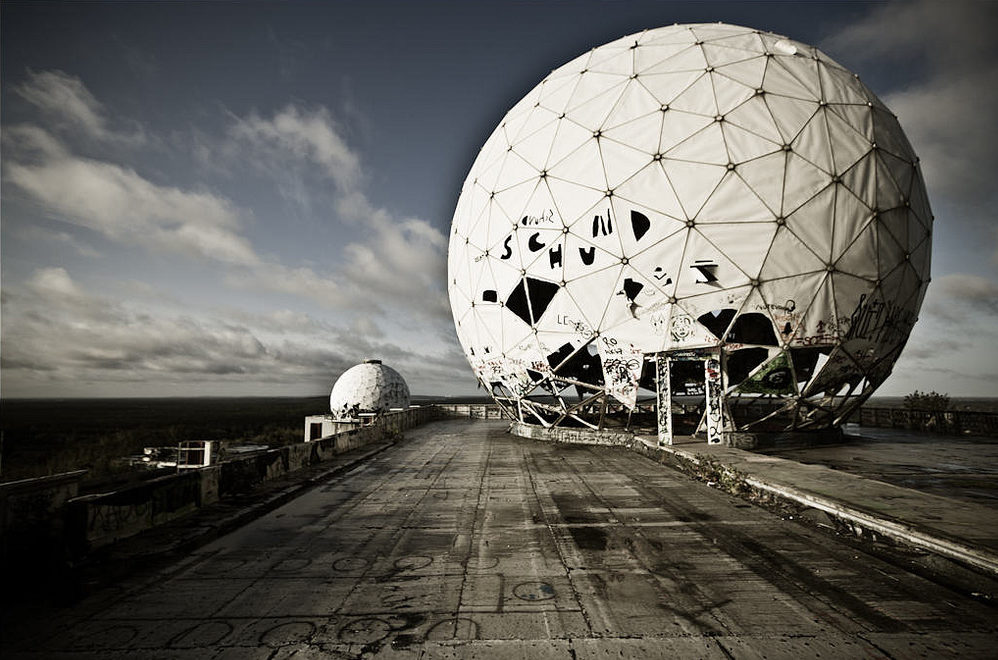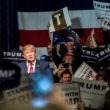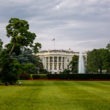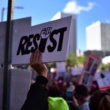As far as relationships go, Russia was never going to be easy. “It is a riddle, wrapped in a mystery, inside an enigma,” Winston Churchill famously told a 1939 radio audience when describing what was then the Soviet Union; indeed, relations between Moscow and the West since the ascension of the Bolsheviks in 1917 had been tumultuous. The Second World War and the need to destroy militant fascism in Germany and Japan brought with them a tenuous alliance between the West and Russia that ended once Berlin and Tokyo were defeated.
An Iron Curtain subsequently descended across Soviet-occupied Europe and Asia, and in the Cold War that followed, the world wrestled with the task of containing Soviet power while avoiding a general nuclear war with Moscow. Hundreds of thousands of American troops, part of the larger North Atlantic Treaty Organization (NATO), faced Russian counterpart forces across a divided Europe, restrained by the fear of nuclear mutually assured destruction and the diplomatic devices of détente and, later, glasnost.
The fall of the Soviet Union, in 1991, was heralded in the West as a victory of democracy over communism; in certain circles inside Russia, however, it was viewed as the greatest geopolitical disaster of the 20th century. The bumbling successor to Soviet rule, Boris Yeltsin, presided over his nation’s inglorious fall, only to be replaced by the former KGB officer Vladimir Putin, whose defining mission over the course of the past two decades has been to restore Russia to its former status as a regional and, to a lesser extent, global power.
Successive American presidential administrations have struggled to respond to Vladimir Putin’s resurgent Russia: George W. Bush famously peered into the Russian leader’s soul; while his successor, Barack Obama, sought a “reset” that fizzled in the aftermath of Russian military intervention in the Ukraine and Syria. The one constant in U.S.–Russian relations during these difficult times was the recognition among all parties that the Cold War was over, and that the concept of a general war in Europe between Russia and the West was a matter of the historical past, and not a current or future consideration.
It took President Donald Trump less than 80 days to undo more than 25 years of post–Cold War relations between the West and Russia. As a candidate, Trump famously campaigned on his intention to try to be friends with Russia and its strongman president, Vladimir Putin. (“Wouldn’t it be a great thing if we could get along with Russia?” Trump asked at a campaign rally in July 2016.) But the Trump presidency has been dogged by accusations of collusion with Russia to help influence the American presidential election in Trump’s favor. These accusations have, in turn, adversely impacted the Trump administration’s efforts to steer a new course in U.S.–Russian relations.
One of Donald Trump’s cornerstone foreign policy positions was that America’s membership in NATO was “obsolete” in a post–Cold War era when the focus is more on countering global terrorism than containing Russian ambition. This policy came under increasing attack by the president’s political opponents, who were concerned about the possibility of a quid-pro-quo arrangement between Trump and the Russians. A terse meeting between President Trump’s secretary of state, Rex Tillerson, and NATO foreign ministers at the end of March 2017 only reinforced concerns over the Trump administration’s apparent willingness to turn its back on the decades-old alliance in favor of improved relations with Moscow.
It took President Donald Trump less than 80 days to undo more than 25 years of post–Cold War relations between the West and Russia.
The Trump administration’s seeming blind eye toward Russia’s ongoing intervention in Syria—along with its 2014 annexation of Crimea and its continued meddling in eastern Ukraine—stoked fears among proponents of NATO that Trump’s pro-Russian policy was strengthening Moscow to the detriment of the United States and Europe. Improved coordination between the Russian and American militaries in de-conflicting their respective efforts to fight the Islamic State in Syria only furthered concerns that transatlantic relationships were being sacrificed in the name of fighting terrorism.
These concerns seemed to evaporate in the aftermath of the April 7, 2017, American cruise missile strike against Syria. Almost overnight, the promise of improved U.S.–Russian relations was quashed as Russian anger over the American attack, coupled with American consternation at Moscow’s perceived coddling of the Assad regime in the face of its alleged use of chemical weapons, appeared to sink any chance of diplomatic rapprochement between the two nuclear superpowers. “[T]he current state of U.S.–Russia relations is at a low point,” Secretary Tillerson told a press conference at the conclusion of a tense two-day visit to Moscow following the American action against Syria. “There is a low level of trust between the two countries.”
The breakdown in relations manifested itself further when President Trump, in a meeting with NATO Secretary General Jens Stoltenberg at the White House the day Secretary Tillerson departed Moscow, reversed course on the viability of NATO, noting that, “I said [NATO] was obsolete; it’s no longer obsolete.” While Trump explained the alliance’s new relevance in terms of the role it could play in the war on terrorism, Stoltenberg’s focus was on Europe and the deployment of the American military there. “Over the past months,” he said, standing next to Trump at the White House, “thousands of U.S. troops have been deploying to Europe, a clear demonstration that America stands with allies to protect peace and defend our freedom.”
Stoltenberg clearly had Russia on his mind. “NATO,” he declared, “is in the process of implementing the biggest reinforcement of our collective defense since the end of the Cold War. And one element of that is to increase our military presence in the eastern part of the alliance. And we are now deploying four battle groups to the three Baltic countries and Poland, and there have also been more U.S. forces in that part of Europe.”
The forces Stoltenberg mentioned, however, hardly inspire confidence, especially in light of Russian insinuations about a conventional war with NATO. His “battle groups” are little more than reinforced, battalion-size units engaged in what NATO calls “enhanced forward presence” operations, deployed one each in Latvia, Estonia, Lithuania, and Poland. Consisting of some 1,500 men each, these battle groups constitute little more than a symbolic presence and are no match for the heavy Russian formations facing off against them.
Additional American deployments, consisting of an armored brigade, attack helicopters, and six new F-35 fighters, do nothing to shift the ultimate balance of power in the Baltic region. A recent RAND study on “Reinforcing Deterrence on NATO’s Eastern Flank” concluded that even this bolstered posture would fall far short in the event of an actual shooting war with Russia, and that Russia would overrun the Baltics within 60 hours of a conflict breaking out.
According to RAND, a viable defensive deterrent would require a military posture seven times greater than the one currently employed by NATO and the United States—a commitment that, given NATO’s resistance to increased military spending, is as unrealistic as it is unsustainable. “We don’t want a new Cold War,” Stoltenberg declared during his visit to the White House. “We don’t want a new arms race.”
The European aversion to paying for its own collective defense was front and center during President Trump’s speech on May 25, 2017, at the new NATO headquarters in Brussels. Ostensibly this was an occasion to celebrate the transatlantic bond between North America and Europe symbolized by NATO and its collective security guarantee built around the premise that when one member is attacked, all will come to its defense. This guarantee, articulated in Article 5 of the NATO Charter, has been invoked only once in the history of NATO, after the Sept. 11 terror attack on the United States.
History has shown that when America lacks decisiveness in defining its national interest, conflict generally follows.
Rather than celebrate the active manifestation of the NATO Charter represented by the events of Sept. 11 (and by a new memorial that Trump and the other leaders were supposed to be dedicating), Trump lambasted the alliance, noting that, “Twenty-three of the 28 member nations are still not paying what they should be paying and what they’re supposed to be paying for their defense.” This failure on the part of Europe and Canada impacted NATO’s ability to participate effectively in the war on terror, Trump observed, and adversely impacted NATO’s ability to “close the gaps in modernizing, readiness, and the size of forces.”
There was little Europe could do or say in reply; a sustained firm handshake by France’s newly elected president, Emmanuel Macron, could not erase the fact that the French military was unable to deploy in response to terrorism in Mali without American military airlift support. Germany’s president, Angela Merkel, declared forcefully after her meetings with Trump that Europe “must take our fate into our own hands” when it comes to its collective security, without noting that the cost of rebuilding Germany’s depleted armed forces (most of the nation’s armored units are confined to barracks due to a lack of spare parts) is prohibitively high. Trump treated Europe’s leaders with the same disdain he showed for the president of NATO’s newest member, Montenegro —whom he visibly shoved out of the way at a NATO event to assume America’s rightful place at the head of the pack—evidencing little regard for those who are apparently unable or unwilling to carry their own weight.
In the decades since the end of the Cold War, American policy toward Russia, while imperfect in many regards, was consistent insofar as it kept a steady hand on the tiller of diplomacy, enabling the two nations to navigate a course whose destination was marked by peace, not war. A key component to this balancing act was the NATO alliance. Little more than 100 days into its term, the Trump administration has simultaneously thrown U.S.–Russian and U.S.–NATO relations off this course.
Whether these relationships can be repaired is in question. With the U.S. Congress clamoring for increased sanctions targeting Russia due to allegations of Russian meddling in the 2016 presidential election, Russian bombers probing Alaskan airspace, and America reinforcing its trip-wire military presence in Poland and the Baltics, President Trump has woven America’s relationship with NATO and Russia into the fabric of American domestic politics and, more disconcertingly, has conducted his presidency in a manner as volatile as it is inconsistent.
History has shown that when America lacks decisiveness in defining its national interest, conflict generally follows. This was true in 1950, when Dean Acheson publicly excluded South Korea from America’s defense “perimeter” on Asia, inadvertently green-lighting North Korea’s invasion. It was also true when April Glaspie, in 1990, privately distanced the United States from Iraq’s border dispute with Kuwait, paving the way for Saddam Hussein’s invasion and occupation. Though President Trump claims to want better relations with Russia while maintaining a strong and active NATO alliance, his failure to criticize Russian intervention in Ukraine and Syria, combined with his chastisement of NATO and silence on Article 5 collective security, could result in America bumbling its way toward a new Cold War that could, at a moment’s notice, turn dangerously hot.
Former Marine intelligence officer Scott Ritter served on the staff of General Norman Schwarzkopf during the Gulf War and as a U.N. weapons inspector in Iraq from 1991–1998. He is the author of several books.
This article has been updated.







NATO is actually North Atlantic Treaty Organization,
NAFTA is North American Free Trade Agreement.
Loved the article!
Obama’s weakness is to blame for Russia and China’s power grab.
https://freedomnews.today/